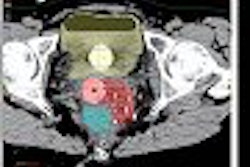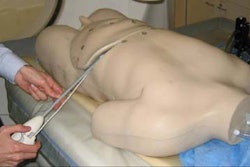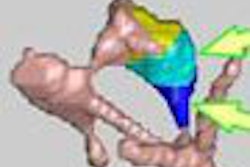You don't have to be a major academic institution to benefit from having a dedicated 3D lab for image processing. A 3D lab can be cost-effective for imaging facilities with as few as four or five radiologists, according to Dr. Jay Cinnamon of Quantum Radiology Northwest, a large multifacility imaging practice in Marietta, GA.
Centralized 3D postprocessing labs have already become commonplace at the larger institutions that were among the early adopters of 3D technology. These labs enable academic facilities to house cross-functional imaging personnel, particularly radiologic technologists, computer scientists, and engineers, at a single location where they can take over the postprocessing duties once handled by radiologists.
But the rapid evolution of volumetric imaging technology means that 3D labs can be implemented even at community radiology practices, Cinnamon said in a presentation at the 2005 International Symposium on Multidetector-Row CT in San Francisco last month. High-tech clinical applications once reserved for academic centers are now making their way into community practice, meaning that smaller centers can now enjoy the efficiency benefits that 3D brings.
Cinnamon believes there are a number of benefits to implementing a 3D lab, the chief one being increased efficiency. Cinnamon estimates that Quantum's lab has reduced the amount of time it takes for him to review a neurovascular CT angiography study from 45 minutes to 10 minutes because the lion's share of the work is now being done by the lab's technologists.
Adding a 3D lab enables an imaging facility to offer better clinical service to its referring physicians in terms of new imaging tests like virtual colonoscopy, and can be a profitable entity on its own when implemented correctly. A 3D lab can also help staff morale as it gives technologists the opportunity to work with cutting-edge technology, Cinnamon said.
Labs can also have beneficial effects on quality at an imaging center. Radiologists can have varying degrees of computer proficiency, and this can create the opportunity for variability in 3D image interpretation. By centralizing its image processing, the 3D lab puts an imaging facility on the road to standardizing its output and leveling the playing field among radiologists of different skill levels.
Implementation
How a facility implements a 3D postprocessing lab is key, Cinnamon said. A good model is to pick a small number of clinical applications to begin offering to referring physicians, and expand from there. Each new clinical application should have a physician champion who works closely with the technologists and 3D software vendors on that application, and who is responsible for establishing protocols and workflow for it. Good information technology support and interconnectivity to the PACS and between imaging sites is also key.
Staffing is also crucial. Technologists working in the 3D lab should be smart, motivated, and willing to learn patient anatomy and pathology in addition to postprocessing skills. Cinnamon believes the basic models for radiologist/technologist interaction in 3D can range from technologists conducting simple tasks such as preparing studies and adding measurements to serving as a first line of diagnosis for obvious pathology such as an aneurysm.
"My technologists routinely identify aneurysms, and just last week our chief tech pointed out a persistent trigeminal artery," Cinnamon said. "Don't underestimate the knowledge that these people can acquire if they are enthusiastic and motivated."
Finally, it's critical that facilities implementing 3D establish consistent processes and protocols for how they process images. All studies for a particular clinical application should have a prescribed set of images arranged in a predefined and consistent order. This enables the creation of a rhythm of review and dictation, which leads to more efficiency and consistency, according to Cinnamon.
By Brian Casey
AuntMinnie.com staff writer
July 18, 2005
Related Reading
Start-up 3DR aims to outsource 3D processing, July 1, 2005
How to find and train a 3D technologist, June 17, 2005
Integrated 2D/3D offers workflow, clinical gains, June 17, 2005
3D: Rendering a new era, May 2, 2005
3D and the future of imaging, November 3, 2003
Copyright © 2005 AuntMinnie.com



















